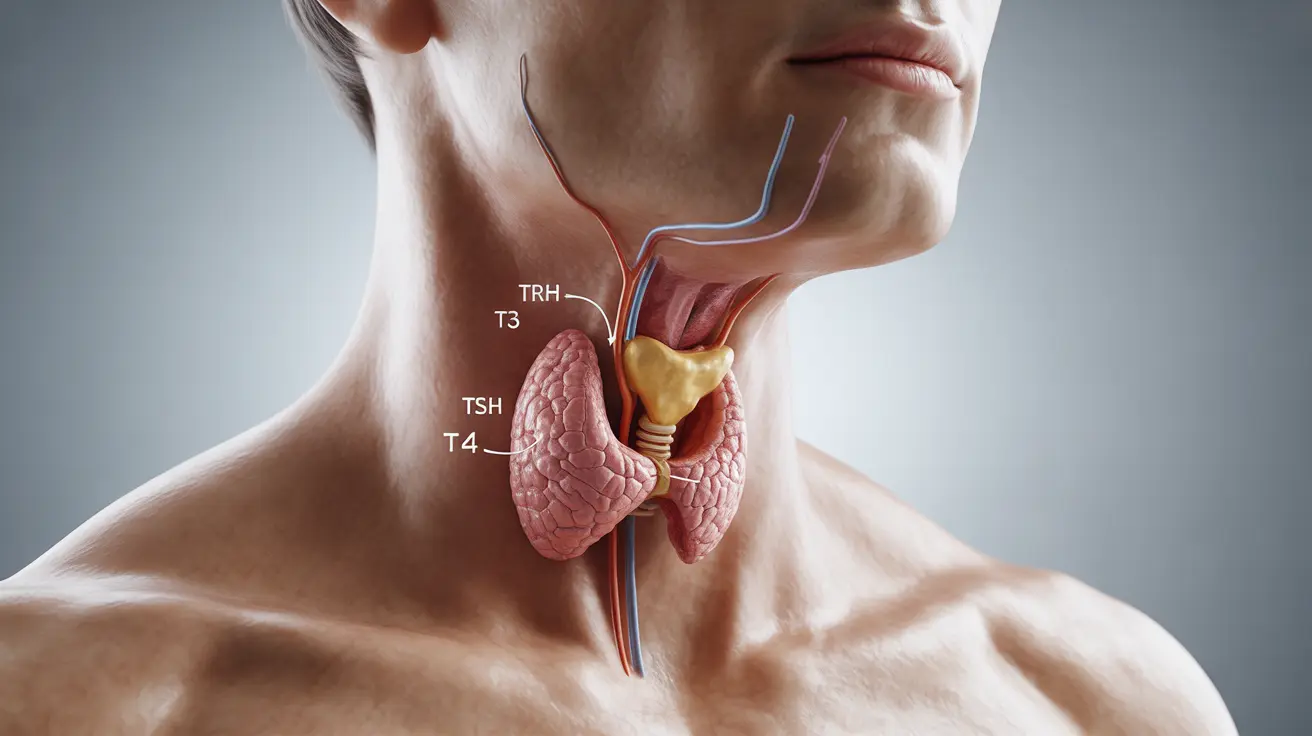Pituitary hypothyroidism, also known as secondary hypothyroidism, occurs when the pituitary gland fails to produce enough thyroid-stimulating hormone (TSH), leading to reduced thyroid hormone production. This condition differs from primary hypothyroidism and requires specific diagnostic approaches and treatment strategies. Understanding its unique characteristics is crucial for proper management and optimal health outcomes.
What is Pituitary Hypothyroidism?
Unlike primary hypothyroidism, which stems from thyroid gland dysfunction, pituitary hypothyroidism originates in the pituitary gland. This small but crucial gland in the brain normally produces TSH, which signals the thyroid gland to make thyroid hormones. When the pituitary gland malfunctions, it disrupts this vital hormonal cascade.
Causes and Risk Factors
Several factors can lead to pituitary hypothyroidism:
- Pituitary tumors or masses
- Head trauma or brain surgery
- Radiation therapy to the brain
- Inflammation or infection of the pituitary
- Genetic conditions affecting pituitary development
- Sheehan's syndrome (damage to the pituitary after severe blood loss during childbirth)
Signs and Symptoms
Adult Symptoms
Adults with pituitary hypothyroidism may experience:
- Fatigue and weakness
- Weight gain
- Cold sensitivity
- Depression
- Dry skin and hair
- Memory problems
- Muscle aches
Childhood Symptoms
In children, pituitary hypothyroidism can cause:
- Growth delays
- Delayed puberty
- Poor cognitive development
- Fatigue
- Weight gain
- Delayed bone age
Diagnosis and Testing
Diagnosing pituitary hypothyroidism requires specific blood tests and careful interpretation:
- Thyroid hormone (T4) levels
- Thyroid-stimulating hormone (TSH) levels
- Additional pituitary hormone testing
- MRI of the pituitary gland when indicated
Treatment Approaches
Treatment for pituitary hypothyroidism typically involves:
- Thyroid hormone replacement therapy (levothyroxine)
- Regular monitoring of thyroid hormone levels
- Adjustment of medication dosage as needed
- Treatment of underlying pituitary conditions
- Management of other affected hormones if present
Prevention and Management
While not all cases can be prevented, certain steps can help manage the condition:
- Regular medical check-ups
- Prompt treatment of pituitary problems
- Careful monitoring during and after pregnancy
- Following medication schedules strictly
- Regular hormone level testing
Frequently Asked Questions
What causes pituitary hypothyroidism and how is it different from primary hypothyroidism? Pituitary hypothyroidism is caused by insufficient TSH production from the pituitary gland, while primary hypothyroidism results from thyroid gland dysfunction. The key difference lies in the origin of the problem and the pattern of hormone levels in blood tests.
What are the common symptoms of pituitary (secondary) hypothyroidism in adults and children? Adults typically experience fatigue, weight gain, cold sensitivity, and depression. Children may show growth delays, delayed puberty, and cognitive development issues. Both groups can experience fatigue and weight management challenges.
How is pituitary hypothyroidism diagnosed, and what tests are used to confirm it? Diagnosis involves measuring both TSH and thyroid hormone levels. In pituitary hypothyroidism, TSH levels may be inappropriately low or normal while thyroid hormone levels are low. Additional pituitary hormone testing and imaging may be necessary.
What are the treatment options for pituitary hypothyroidism and how is thyroid hormone replacement managed? Treatment primarily involves thyroid hormone replacement therapy with levothyroxine. Dosing is carefully managed through regular blood tests and symptom monitoring, with adjustments made as needed.
What complications can arise if pituitary hypothyroidism is left untreated, and how can they be prevented? Untreated pituitary hypothyroidism can lead to serious complications including cardiovascular problems, cognitive decline, and in children, permanent developmental delays. Prevention involves early diagnosis, proper treatment, and regular medical monitoring.




